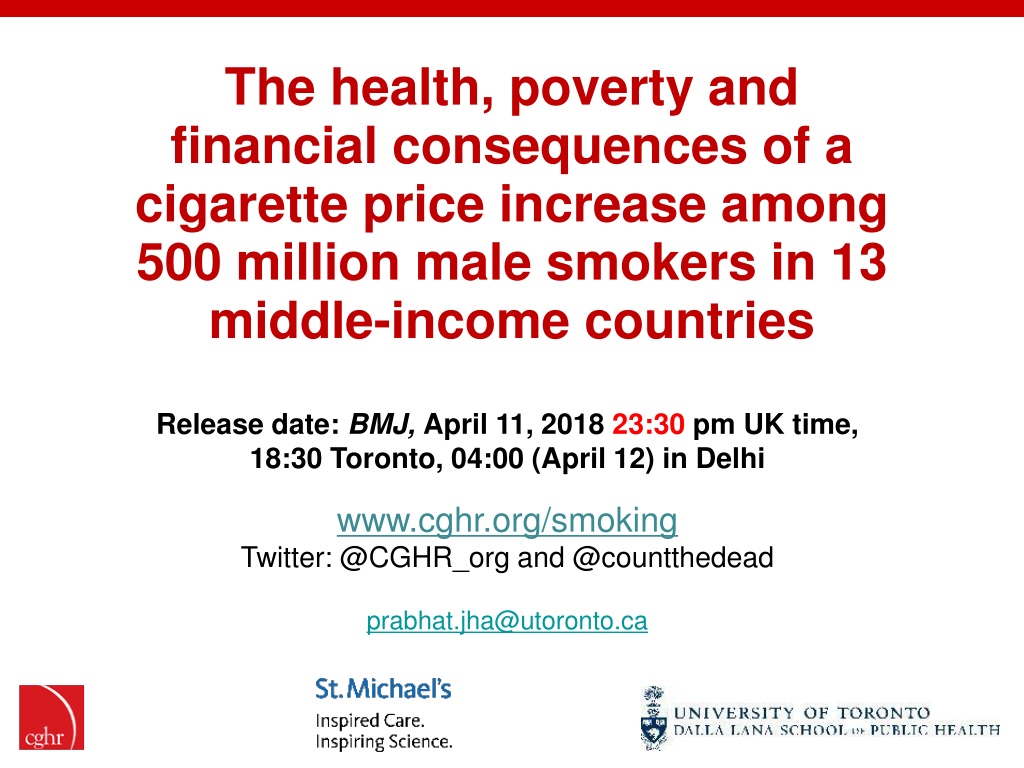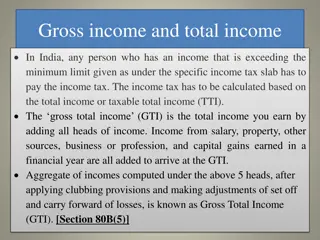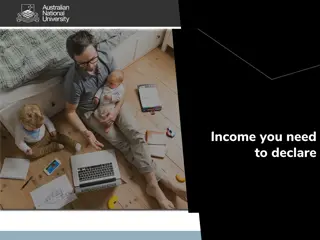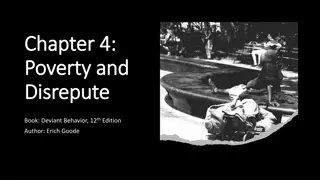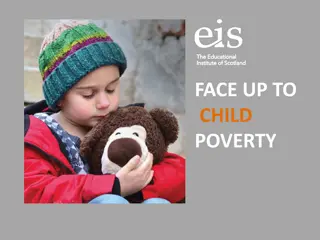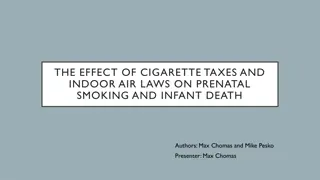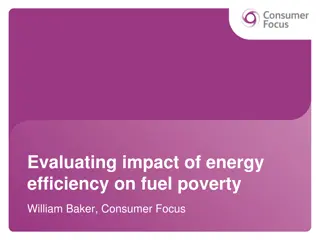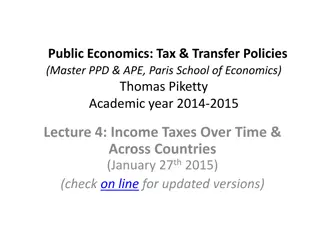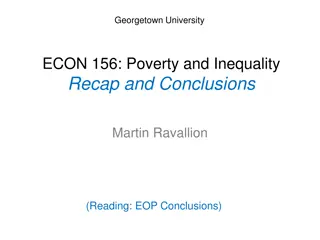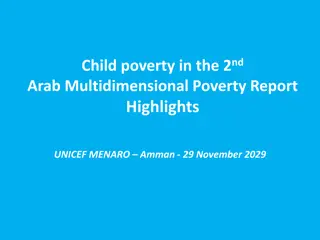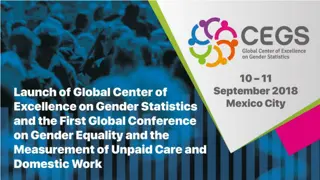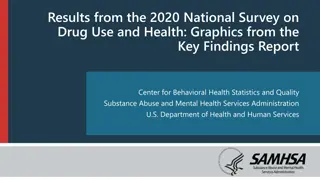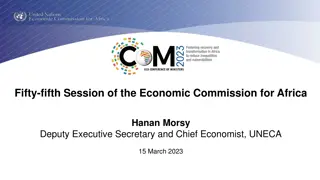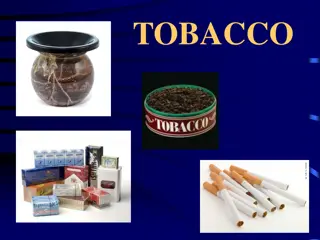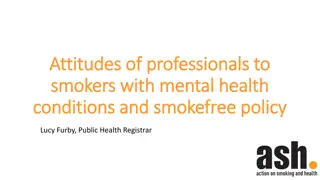Impact of Cigarette Price Increase on Health and Poverty among Male Smokers in Middle-Income Countries
Study reveals a potential 50% cigarette price increase could save 450 million years of life across 13 countries, with the poorest 20% benefiting the most. Financially, USD $157 billion could be saved in treatment costs, mostly by the poorest. Tobacco control through taxation is crucial to prevent millions of premature deaths.
Download Presentation

Please find below an Image/Link to download the presentation.
The content on the website is provided AS IS for your information and personal use only. It may not be sold, licensed, or shared on other websites without obtaining consent from the author. Download presentation by click this link. If you encounter any issues during the download, it is possible that the publisher has removed the file from their server.
E N D
Presentation Transcript
The health, poverty and financial consequences of a cigarette price increase among 500 million male smokers in 13 middle-income countries Release date: BMJ, April 11, 2018 23:30 pm UK time, 18:30 Toronto, 04:00 (April 12) in Delhi www.cghr.org/smoking Twitter: @CGHR_org and @countthedead prabhat.jha@utoronto.ca
Key messages (1 of 2) A 50% increase in cigarette prices would lead to about 450 million years of life gained across the 13 countries due to quitting. The poorest 20% of male smokers would gain an average of five times the life-years (per smoker) from quitting than the richest 20%.
Key messages (2 of 2) USD $157 billion would be saved by avoiding treatment costs for medical conditions caused by smoking. The poorest 20% would avert far more medical costs than the richest 20%. In the countries without universal health coverage, 9 million men, half of them in the poorest 20%, would avoid falling below the World Bank s extreme poverty line. USD $122 billion of additional tobacco tax would be collected, with the richest 20% paying twice as much as the poorest 20%.
What is already known Smoking will kill 1 billion people this century A large proportion of these deaths will occur in low and middle-income countries In most countries, smoking prevalence and rates of smoking-attributable diseases are highest in the poor WHO estimates that 100 million individuals fall into poverty every year due to out of pocket health expenditures, with much of these expenditures for treating tobacco-related diseases
What is already known Effective tobacco control could avoid hundreds of millions of premature deaths this century Tobacco taxation is the single most effective intervention to get smokers to quit Low-income groups are more responsive to price increases than high-income groups
Whats new about this research? This is the largest study to directly quantify the potential impact of a tobacco price increase across income groups covering 2 billion population and 500 million male smokers No other studies have assessed the impact of higher tobacco taxes on health and financial outcomes across a range of countries
Whats new about this research? Higher cigarette taxes are an effective tool to improve health and to reduce global poverty and the results are consistent across 13 diverse middle income countries In these 13 countries alone, some 450 million life- years would be saved from higher excise taxes, contributing substantially to the United Nations target of a one-third reduction in NCD death rates at ages 30-69 years by 2030
Whats new about this research? If implemented worldwide, higher taxes that raise cigarette prices by 50% would avoid about 20 million people falling into poverty Point of comparison: 30 million avoid poverty every year from all other reasons (such as economic growth, trade, etc). Higher tobacco excise taxes are a powerful but generally underused tool to reduce expenditures on disease treatments that lead to poverty
How was the study done? Our static model examined the impact of a large cigarette price increase on: life-years gained averted treatment cost individuals avoiding catastrophic health expenditures & poverty additional tax revenue by income groups in 13 middle-income countries covering 500 million male smokers* This is the largest modeling study of its kind *90% of all smokers in these countries were men This paper was funded by research agencies, who had no role in the analyses or writing of the paper
Philippines Philippines Vietnam Figure 1A Number of individuals avoiding catastrophic health expenditures and averting extreme poverty Bangladesh Mexico India Indonesia China Catastrophic health expenditure is defined as >10% of individual s annual income and extreme poverty is the World Bank s international poverty line of income of USD $1.90/day in PPP
Figure 1B Life-years gained per smoker by age and income 3.0 2.5 Bottom quintile Top quintile Life-years gained by smoker 2.0 1.5 1.4 1.2 1.1 1.0 0.9 1.0 0.8 0.7 0.5 0.4 0.5 0.3 0.3 0.2 0.2 0.2 0.2 0.2 0.1 0.1 0.1 0.1 0.0 25-29 30-34 35-39 40-44 45-49 50-54 55-59 60-64 65-69 70-74 Bottom and top quintiles refer to the poorest 20% and richest 20% of the population
Figure 2 Share of health and financial benefits accruing to the bottom and top income groups of the population *Expected value if there are no differences across bottom and top
Figure 3 Sensitivity analysis for health and financial outcomes by varying degree of tobacco price increase and using country- specific elasticities All USD are in PPP
Common misconceptions about higher tobacco taxes Misconception: Evidence: 1. Higher tobacco taxes hurt the poor Poorer smokers are more price responsive than richer smokers, and quit (or smoke less) in greater proportion with higher taxes. Hence, the health benefits are strongly concentrated in poorer smokers Higher taxes may lead to some smokers switching down to cheaper cigarettes. Governments need to implement a large, simplified tax system to prevent such switching Higher taxes enable higher tax revenue, which may be used to improve health and other social services for the poor
Common misconceptions about higher tobacco taxation Misconception: Evidence: 2. Higher tobacco taxes lead to more illegal activities like smuggling Higher taxes raise both official and black market retail prices.Legal and illegal tobacco are not perfect substitutes because of high costs involved in consuming illegal products The main determinant of smuggling is not price, but lax enforcement of customs and tolerance for organized criminal smuggling networks Even in the face of moderate smuggling, higher excise taxes prices reduce consumption and increase revenue
Common misconceptions about higher tobacco taxation Misconception: 3. Higher tobacco taxes reduce tobacco revenues Evidence: The extra revenue per pack of cigarettes outweighs the reduced demand, yielding revenue increases WHO estimates that raising tobacco excise tax by 1 International Dollar (about US$ 0.80) in all countries would increase excise revenue by 47%, representing an extra USD $141 billion Money not spent on tobacco does not disappear from the economy, but is spent on other goods and services that generate employment. 4. Higher tobacco taxes result in lost jobs Several reviews of even more extreme curtailing of tobacco use find that increases in tobacco taxes do not lead to net job losses (and even some gains)
www.cghr.org/smoking Full BMJ paper (free) Press releases: English & Spanish PowerPoint Video press release Links to other CGHR research
Save lives by raising cigarette taxes www.cghr.org/smoking
